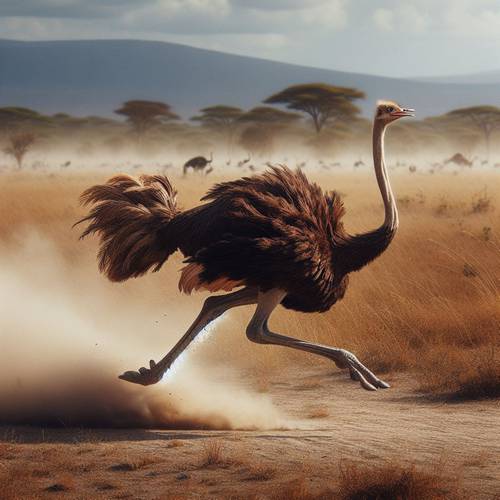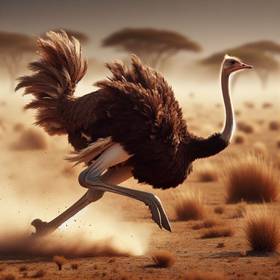Top Running Speed
Ostriches are the fastest birds on land, capable of reaching impressive speeds of up to 60 miles per hour. This incredible top running speed allows them to outrun many predators. Their powerful legs, which can cover up to 16 feet in a single stride, and unique two-toed feet contribute significantly to their swift pace. With such remarkable speed, ostriches not only evade danger but also navigate their vast, open habitats with ease.
Comparison to Other Fast Animals
Cheetah (70 mph)
The fastest land animal, sprinting up to 70 miles per hour in short bursts.
Pronghorn Antelope (55 mph)
Known for sustained speeds, the pronghorn can run up to 55 miles per hour.
Quarter Horse (55 mph)
The fastest horse breed, achieving speeds up to 55 miles per hour in races.
Greyhound (45 mph)
The fastest dog breed, reaching speeds of 45 miles per hour.
Lion (50 mph)
The king of the jungle can sprint up to 50 miles per hour in short bursts.
Springbok (55 mph)
Known for their leaping ability and speed, reaching up to 55 miles per hour.
Hare (45 mph)
A small but fast mammal, capable of speeds up to 45 miles per hour.
The fastest land animal, sprinting up to 70 miles per hour in short bursts.
Pronghorn Antelope (55 mph)
Known for sustained speeds, the pronghorn can run up to 55 miles per hour.
Quarter Horse (55 mph)
The fastest horse breed, achieving speeds up to 55 miles per hour in races.
Greyhound (45 mph)
The fastest dog breed, reaching speeds of 45 miles per hour.
Lion (50 mph)
The king of the jungle can sprint up to 50 miles per hour in short bursts.
Springbok (55 mph)
Known for their leaping ability and speed, reaching up to 55 miles per hour.
Hare (45 mph)
A small but fast mammal, capable of speeds up to 45 miles per hour.



